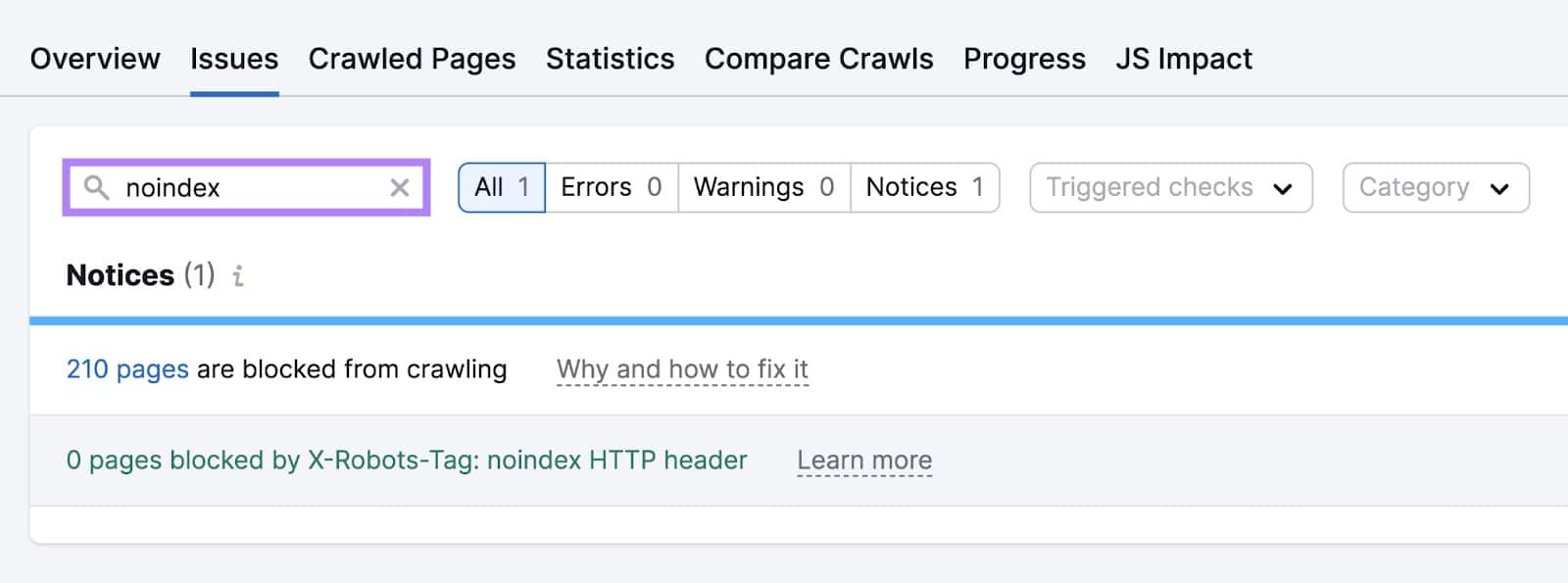What Is Noindex?
Noindex is a rule that tells search engines like google like Google to not index a given webpage—to stop it from being saved in a database that’s drawn from to point out search outcomes.
Which means while you noindex a web page, search engines like google gained’t save that web page. And it will not present up in search outcomes when individuals search for info on-line.
You may noindex pages you don’t need the general public to see. Like non-public content material or PDF pages in your web site.
On this publish, we’ll cowl all the pieces you’ll want to find out about utilizing the noindex rule successfully.
However first, let’s go over why you need to care in regards to the noindex directive within the first place.
Why Is Noindexing Vital in search engine marketing?
The noindex rule helps you management which pages are listed by search engines like google. And that lets you impression your web site’s search engine marketing (search engine marketing) efficiency.
For instance, let’s say you’ve got skinny pages (people who provide little worth) that you just’re unable to take away for one motive or one other.
Utilizing noindex guidelines on these low-quality pages can forestall them from negatively impacting your web site’s search engine marketing efficiency. And as an alternative focus search engines like google’ consideration on different, extra vital pages.
That stated, you don’t need to by chance noindex any vital pages in your web site. For those who do, they gained’t rank in search outcomes. Harming your visibility and site visitors.
So, at all times double-check your noindex implementation.
Tip
Our Website Audit device makes it straightforward to determine and confirm noindexed pages.
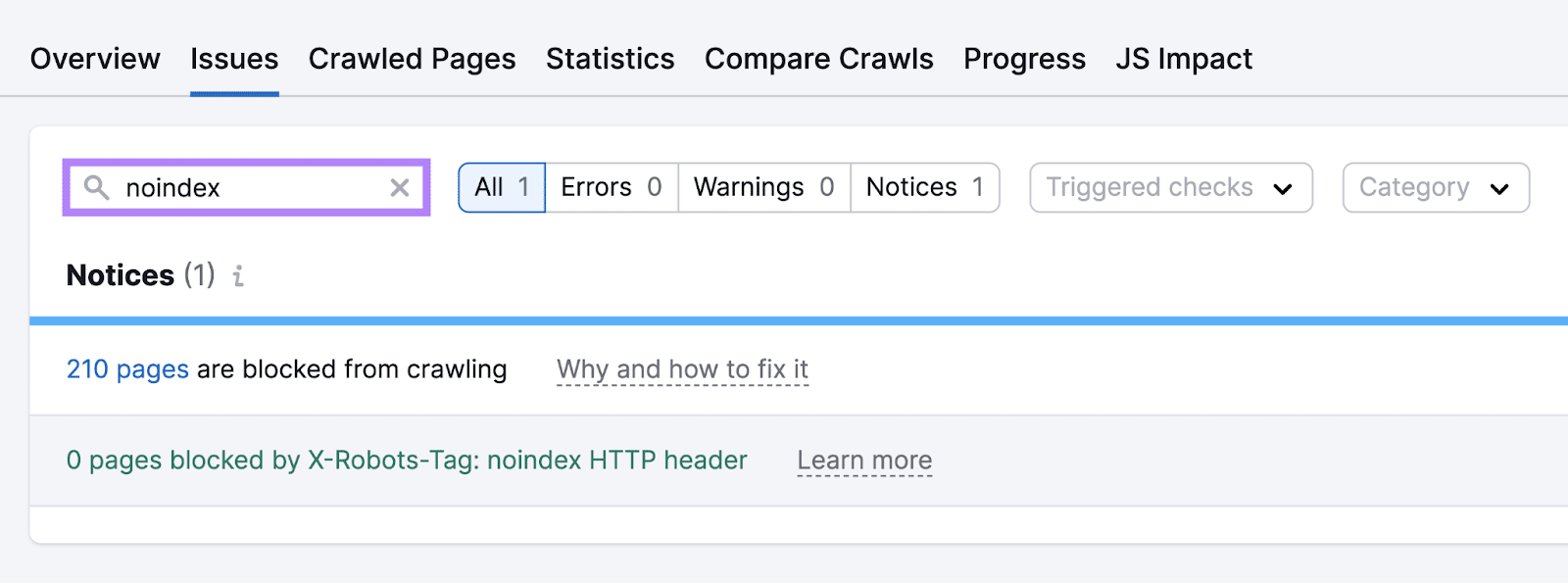
When to Use the Noindex Directive
Numerous varieties of content material are prime candidates for utilizing the noindex rule. These embody:
- Skinny pages: These pages do not provide a lot worth to customers, to allow them to hurt your search engine marketing efficiency
- Pages in a staging surroundings: These pages aren’t meant for the general public to see or use. They’re meant to your crew to make updates and verify issues.
- Inside admin pages: These pages are meant for you and your crew. So, you don’t need them to look in search outcomes.
- Thanks pages: These pages are exhibited to customers after they’ve accomplished an motion like downloading one thing or making a purchase order. You don’t need individuals discovering these pages immediately from search outcomes as a result of it’d confuse them.
- Downloadable content material: These pages are sources that customers are supposed to entry by filling out a kind. So, you don’t need potential prospects discovering them with out having to offer their contact info.
How you can Noindex a Web page
Now that which pages should be noindexed, it’s time to get to the precise implementation.
There are two methods to implement the noindex rule:
- As an X-Robots-Tag within the HTTP response header, which is helpful for non-HTML recordsdata like PDFs, photographs, and movies
- As a meta tag in your HTML, which is helpful for many webpages
Implementing a noindex rule through the HTTP header methodology is sort of technical and requires server-level modifications.
Mainly, you’ll want to add a line of code to one in all your server configuration recordsdata (normally .htaccess).
For Apache servers (one of the extensively used net servers), the code appears like this if you wish to noindex all PDF recordsdata throughout your total web site.
<Information ~ ".pdf$">
Header set X-Robots-Tag "noindex"
</Information>
Given the complexity and potential dangers concerned, we suggest looking for assist from a developer. As a result of even a small syntax error can break your web site.
As for the meta tag noindex methodology, it is comparatively less complicated and may be applied immediately in your pages’ HTML.
The tag goes within the <head> part and appears like this:
<meta identify="robots" content material="noindex">
For those who’re utilizing a content material administration system (CMS) like WordPress, you may typically use search engine marketing plugins to implement noindex meta tags with out immediately enhancing code.
To do this utilizing the Yoast search engine marketing plugin, open the web page you need to noindex within the editor, scroll right down to the Yoast search engine marketing part, and click on the “Superior” tab.
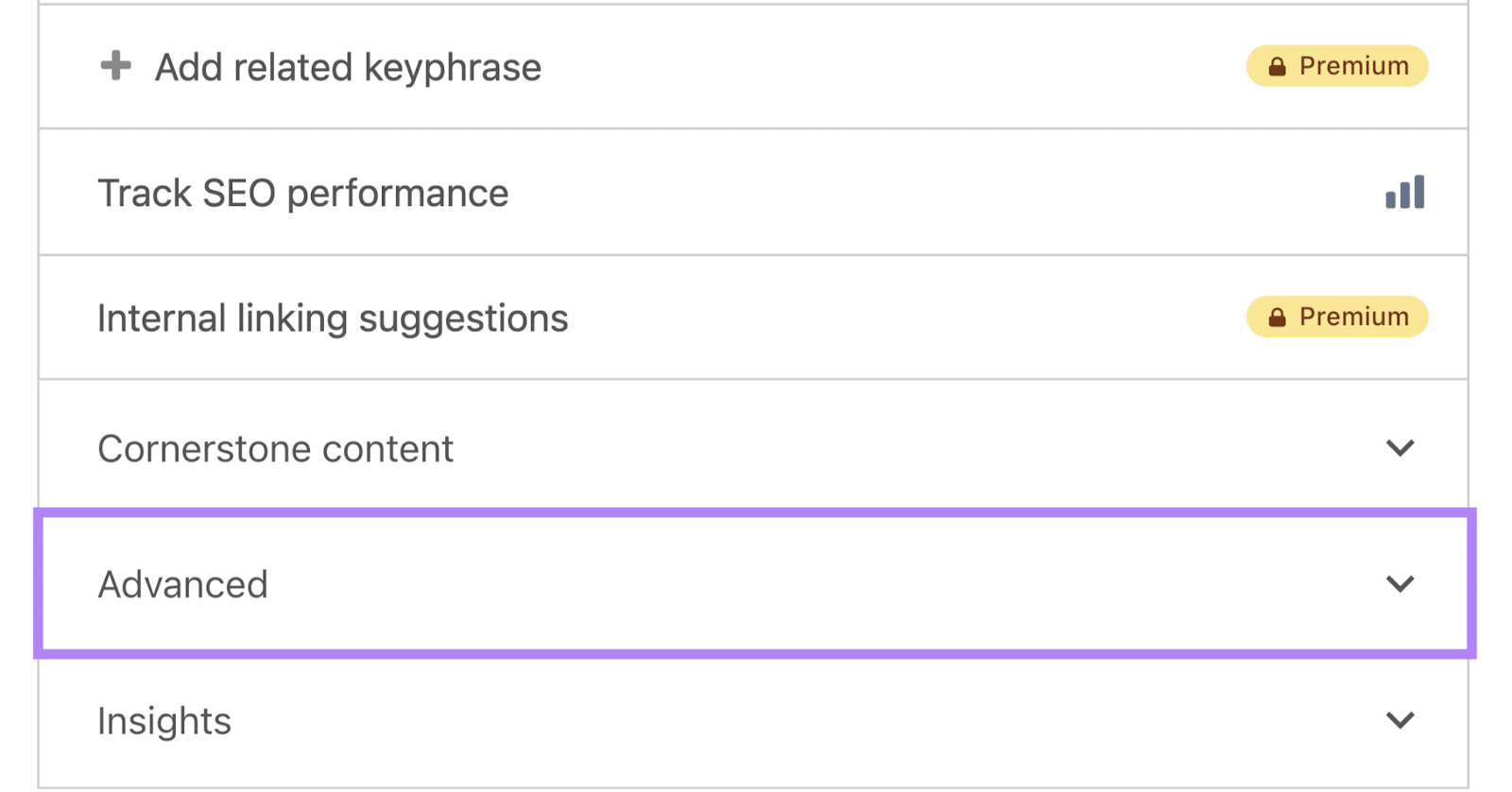
Beneath “Permit search engines like google to point out this content material in search outcomes?,” choose “No” from the drop-down.
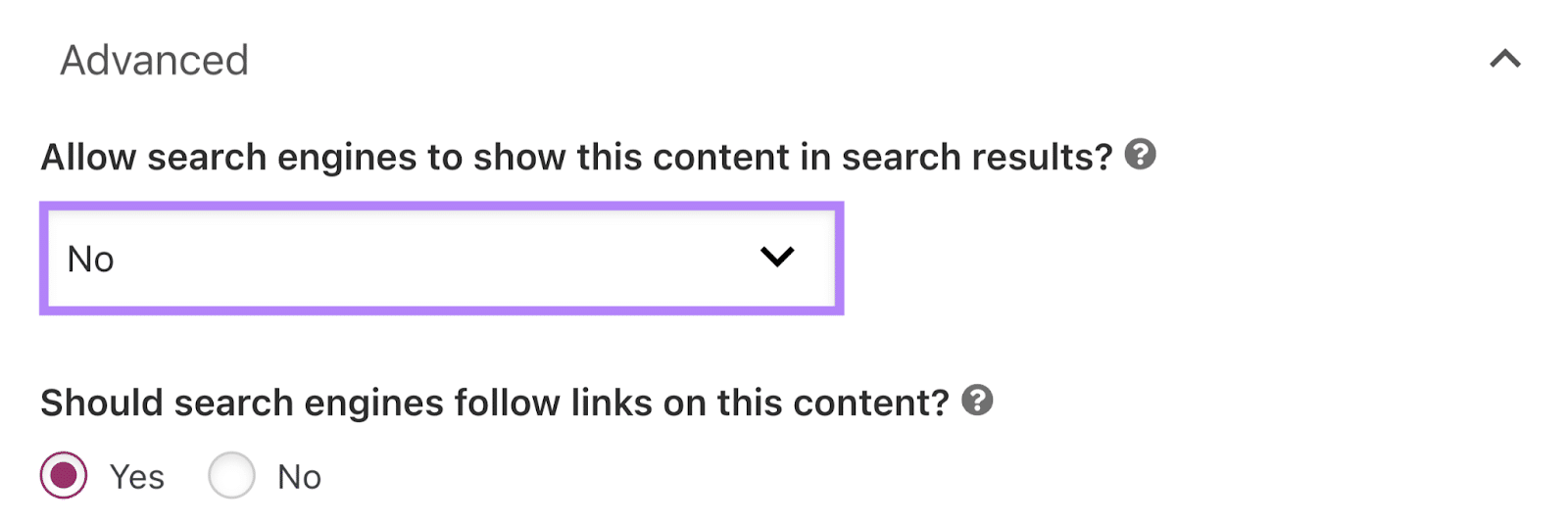
Then, save the publish.
To make use of the Rank Math search engine marketing plugin, open the web page you need to modify within the editor, go to the Rank Math search engine marketing part, and click on the “Superior” tab.
Beneath “Robots Meta,” uncheck the field subsequent to “Index” and verify the one subsequent to “No Index” as an alternative.
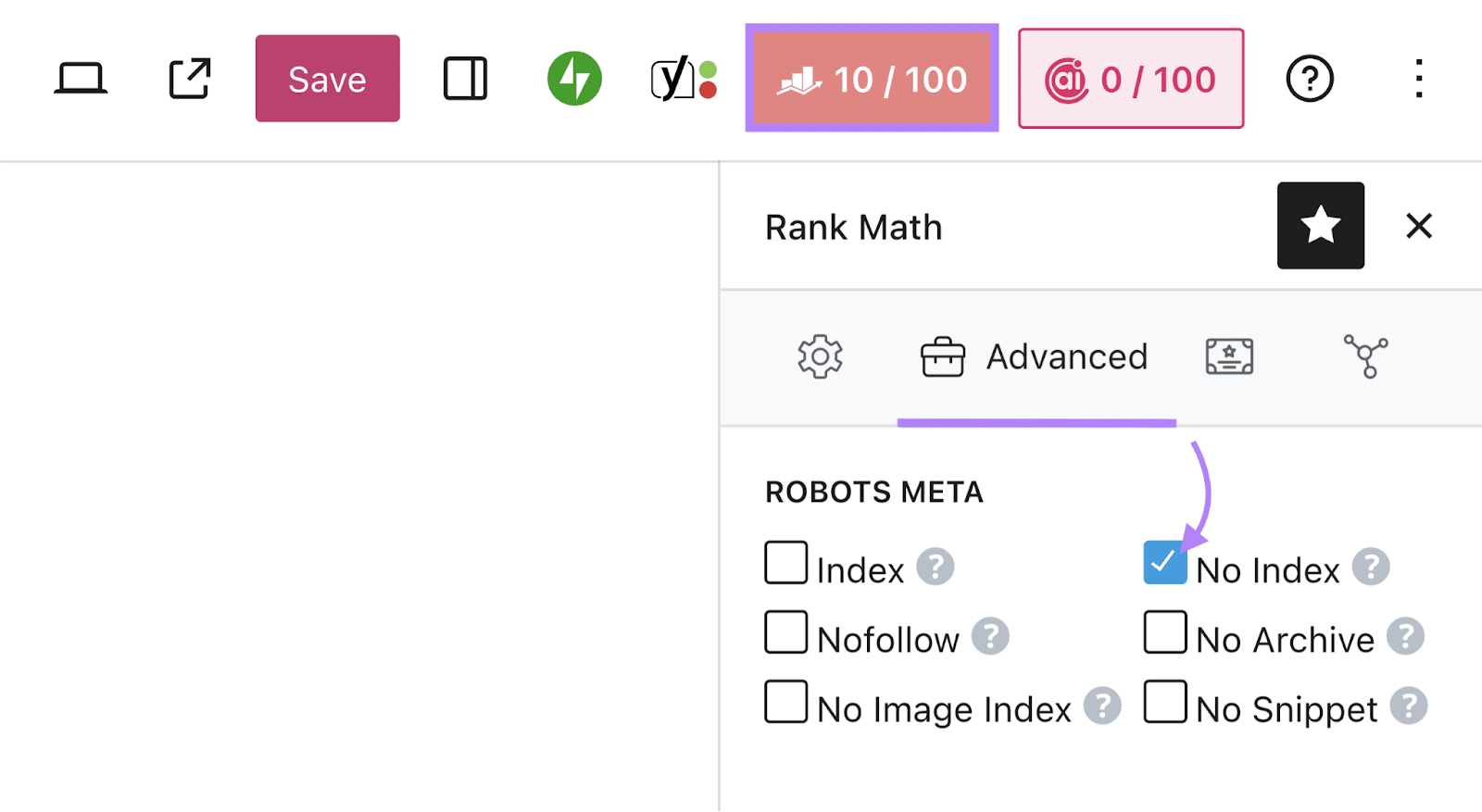
Save the publish to replace your settings.
Greatest Practices for Utilizing Noindex Guidelines
Listed below are some finest practices to bear in mind when you’re working with noindex directives.
1. Don’t Noindex Pages You Need to Seem in Search Outcomes
The noindex rule prevents a web page from getting listed and proven in search outcomes. So, if you’d like a web page to be discovered by means of search, do not noindex it.
Use Semrush’s Website Audit device to be sure to haven’t by chance noindexed vital pages.
Open the device, enter your area identify, and click on “Begin Audit.”

Observe the prompts to configure your settings.
While you’re achieved, click on “Begin Website Audit.”
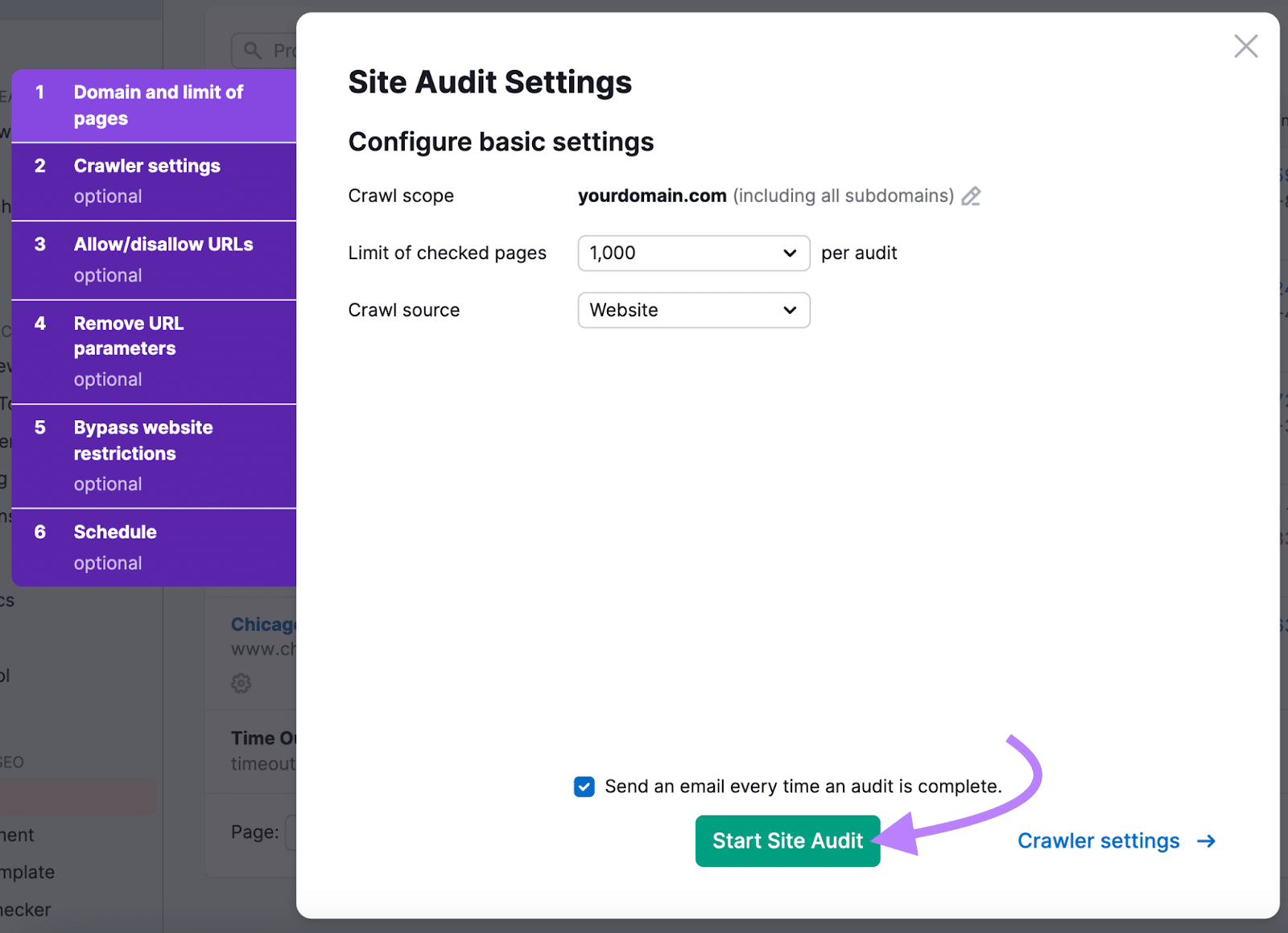
After the audit is full, head to the “Points” tab. And use the search bar to enter “noindex.”
You’ll see the variety of pages blocked by noindex tags or robots.txt (this file tells search engines like google which pages ought to and shouldn’t be crawled). You’ll additionally see whether or not any pages are noindexed utilizing the X-Robots-Tag methodology.
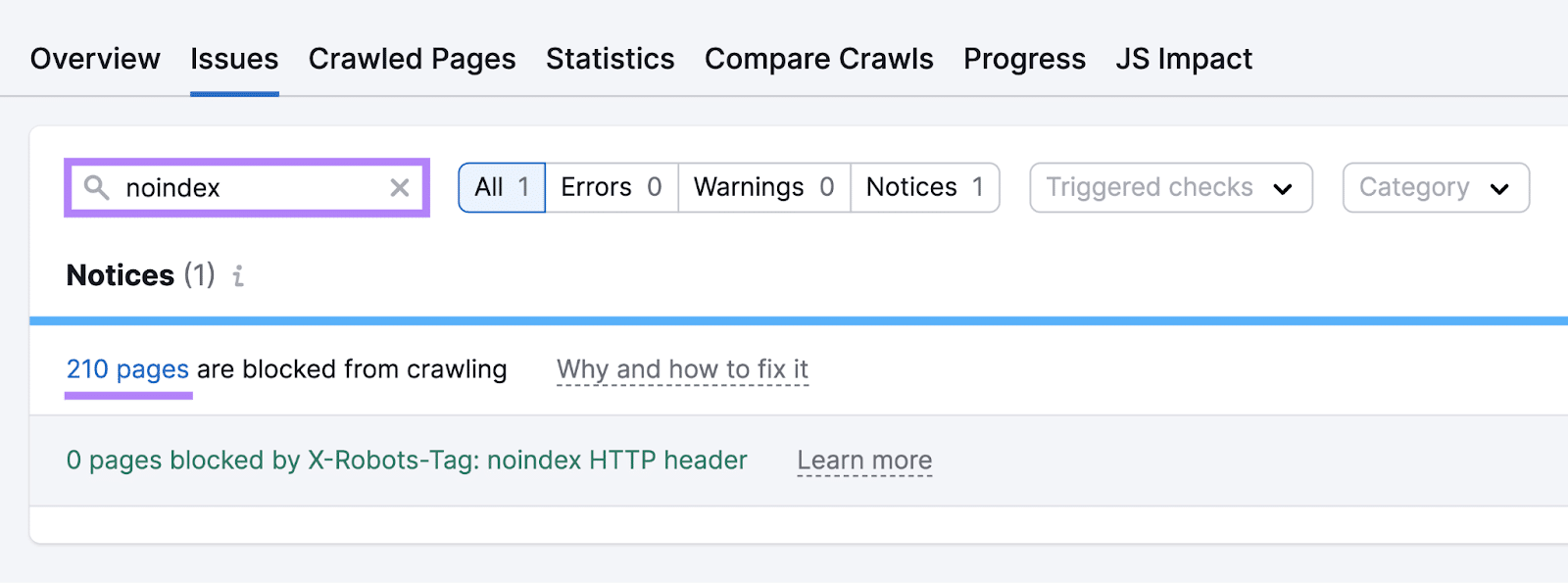
Click on the blue quantity in both problem to view the listing of affected pages. And confirm that none of these pages have by chance been noindexed.
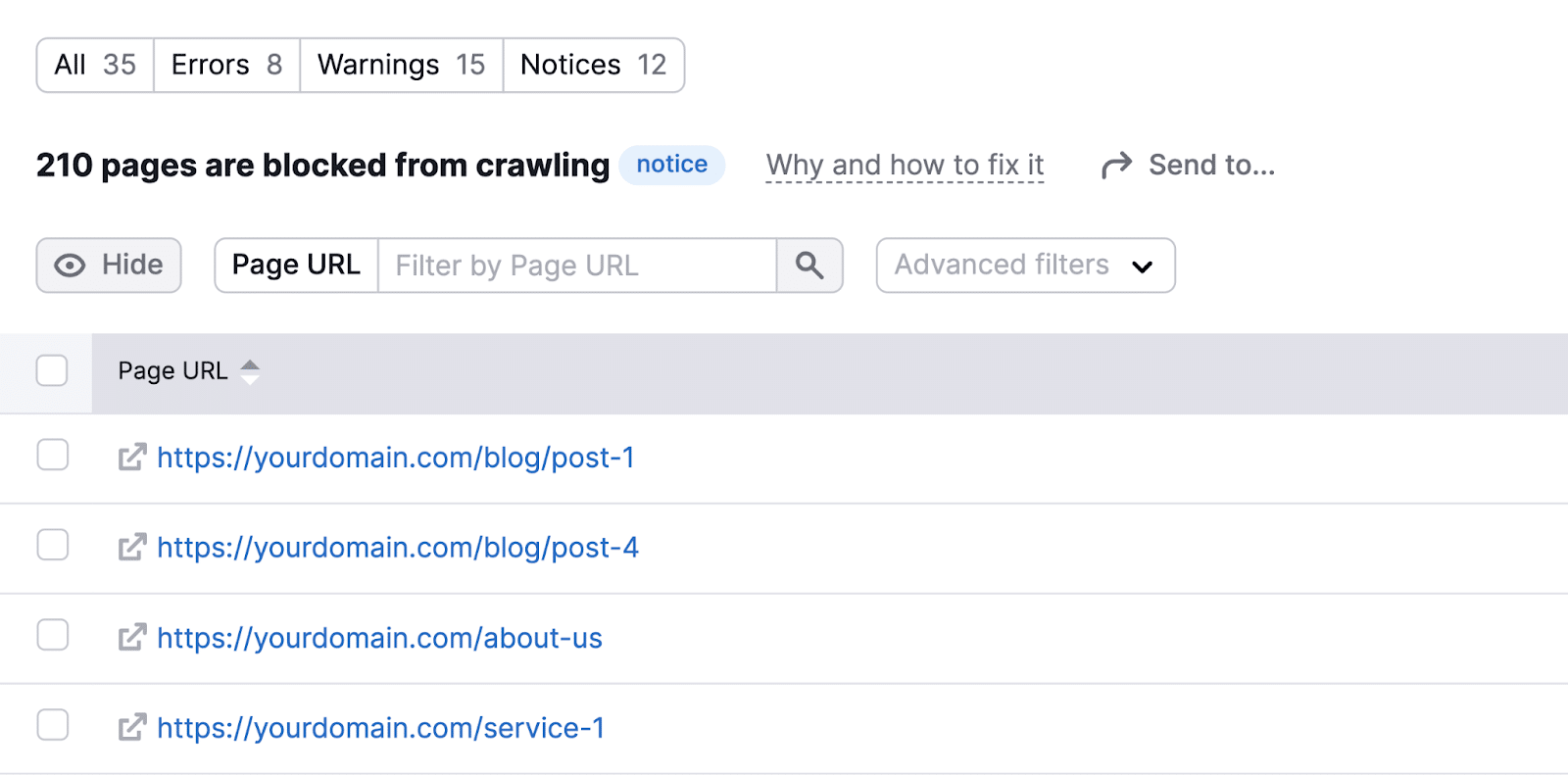
2. Don’t Attempt to Forestall Indexing Utilizing Your Robots.txt File
The robots.txt file tells search engines like google which pages to crawl—not which pages to index.
Even for those who block a web page in robots.txt, search engines like google may nonetheless index it in the event that they discover hyperlinks to it from different pages.
Plus, you really need search engines like google to have the ability to crawl your pages for them to see the noindex tag.
Verify your robots.txt file to ensure it is not blocking pages you need to noindex.
You are able to do this by visiting “[yourdomain.com]/robots.txt.”
Search for the “Disallow” directives in your robots.txt file.
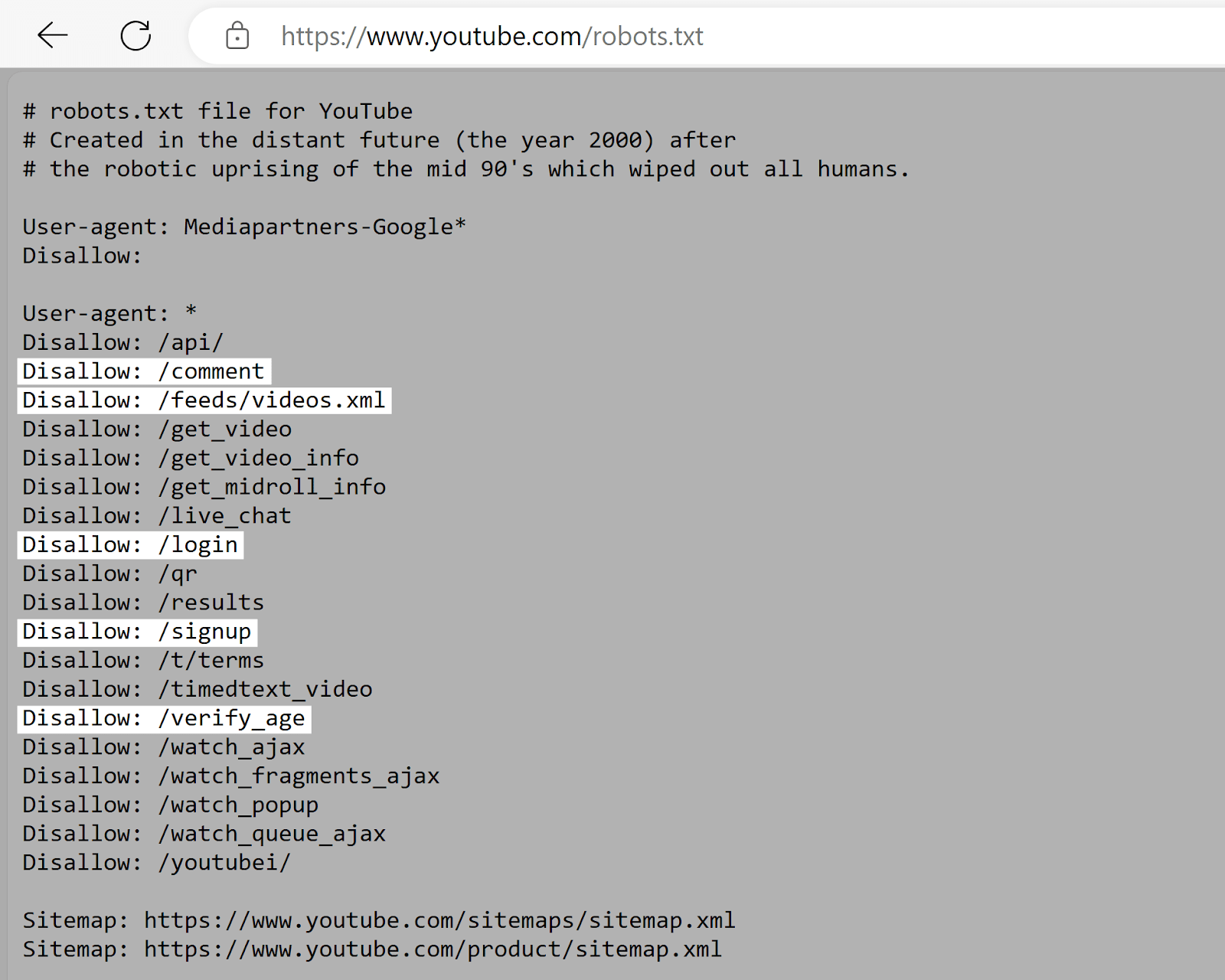
These inform search engines like google which pages or directories they should not entry. So, make sure that the pages you need to noindex aren’t listed right here.
3. Take Steps to Tackle Nofollow Points That May Come up
Noindexing can hurt your search engine marketing if the webpages you’re blocking from showing in search outcomes are among the many solely hyperlinks pointing to a few of your different pages.
How?
Engines like google will solely observe hyperlinks on a noindexed web page for some time. And finally deal with these hyperlinks as nofollow (i.e., that they shouldn’t be adopted or cross rating power).
If there are different pages in your web site with few inner hyperlinks and a few of these hyperlinks are out of your noindexed content material, it will probably turn into harder for search engines like google to search out these different pages.
So, they could not seem in search outcomes. Even if you’d like them to.
Use Website Audit to search for the “# pages have just one incoming inner hyperlink” discover and click on the blue quantity.
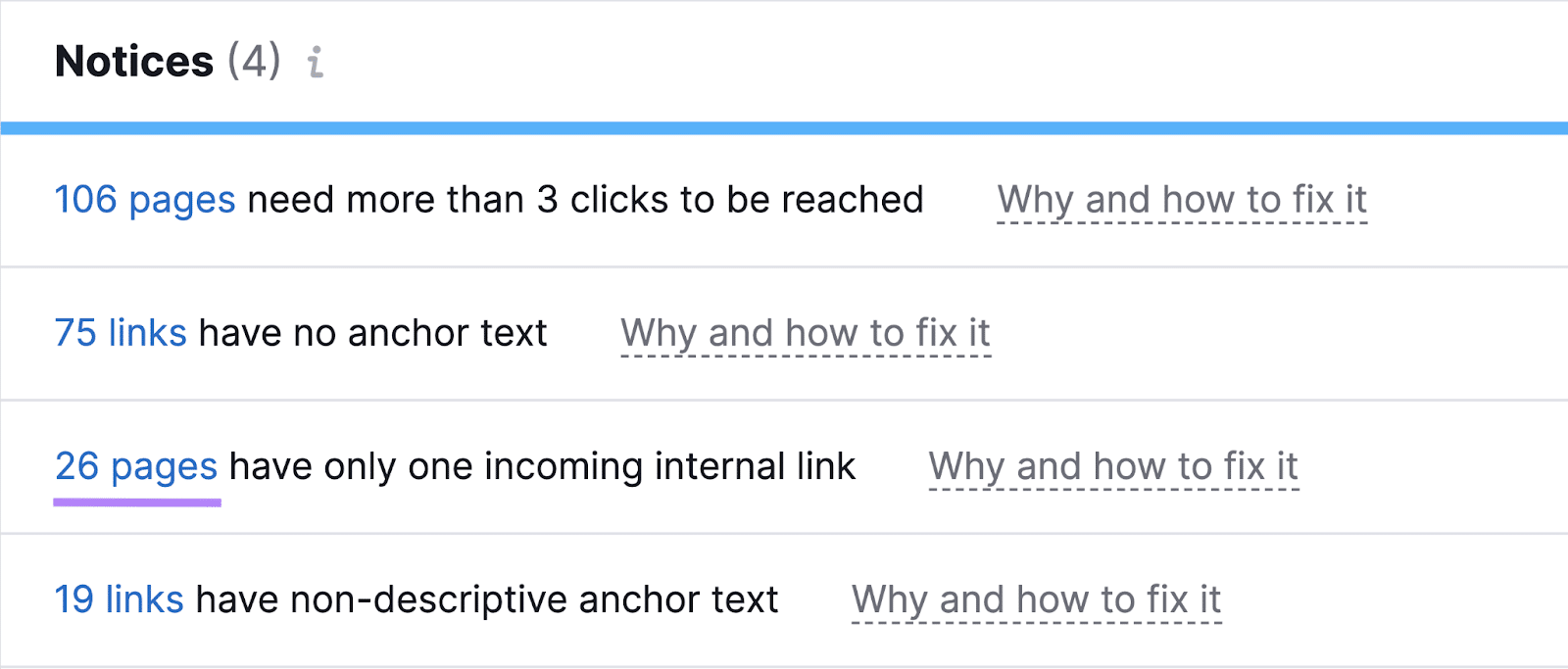
You’ll then see the affected pages.
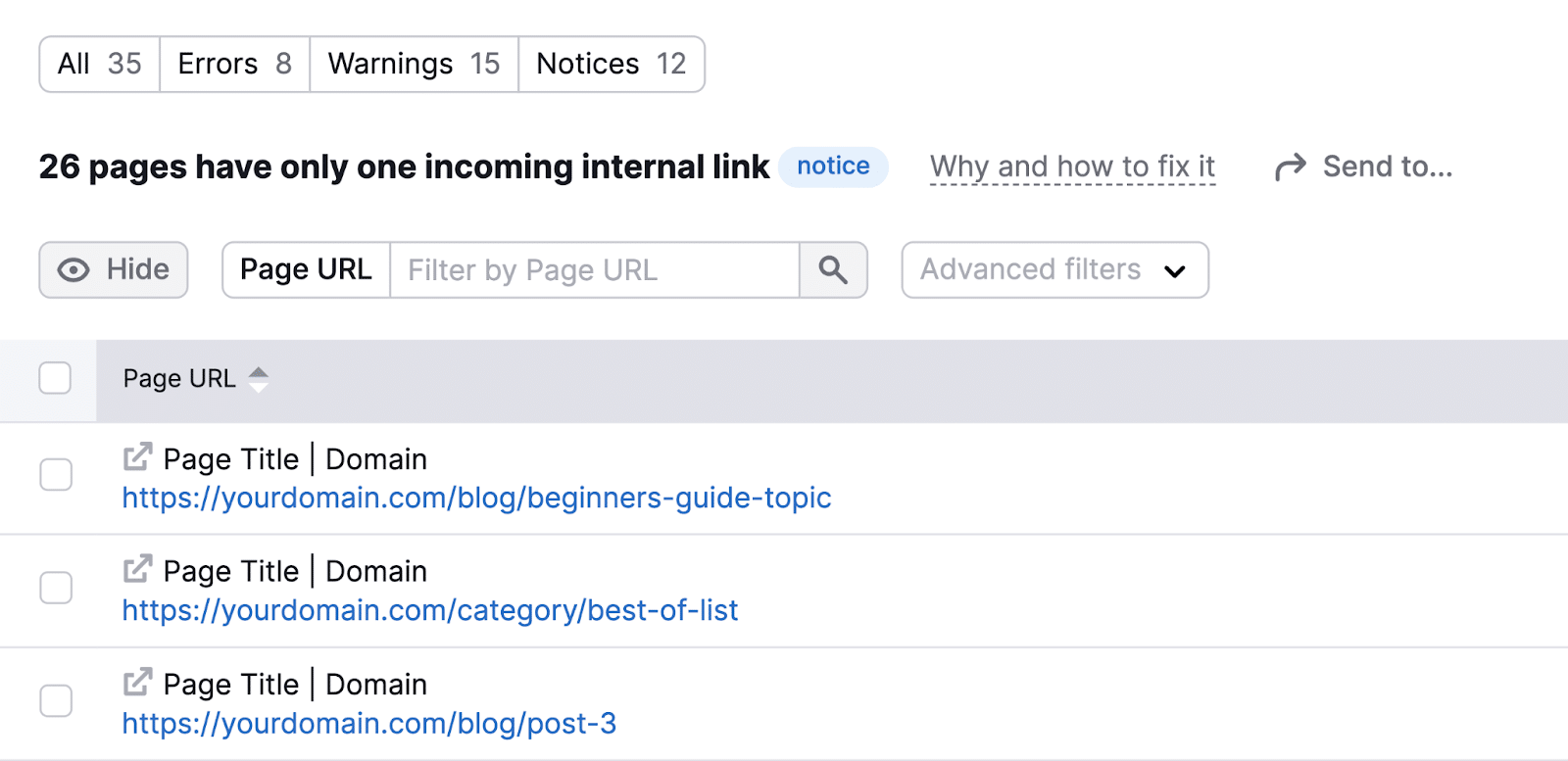
Work to include extra hyperlinks to those pages throughout your web site.
This can be a good concept even when the one incoming inner hyperlink isn’t from a noindexed web page.
4. Don’t Use a Noindex Directive for Duplicate Content material
Duplicate content material is when you’ve got two or extra pages which have precisely the identical or very comparable content material. Which makes it onerous for search engines like google to determine which model to index and rank in search outcomes.
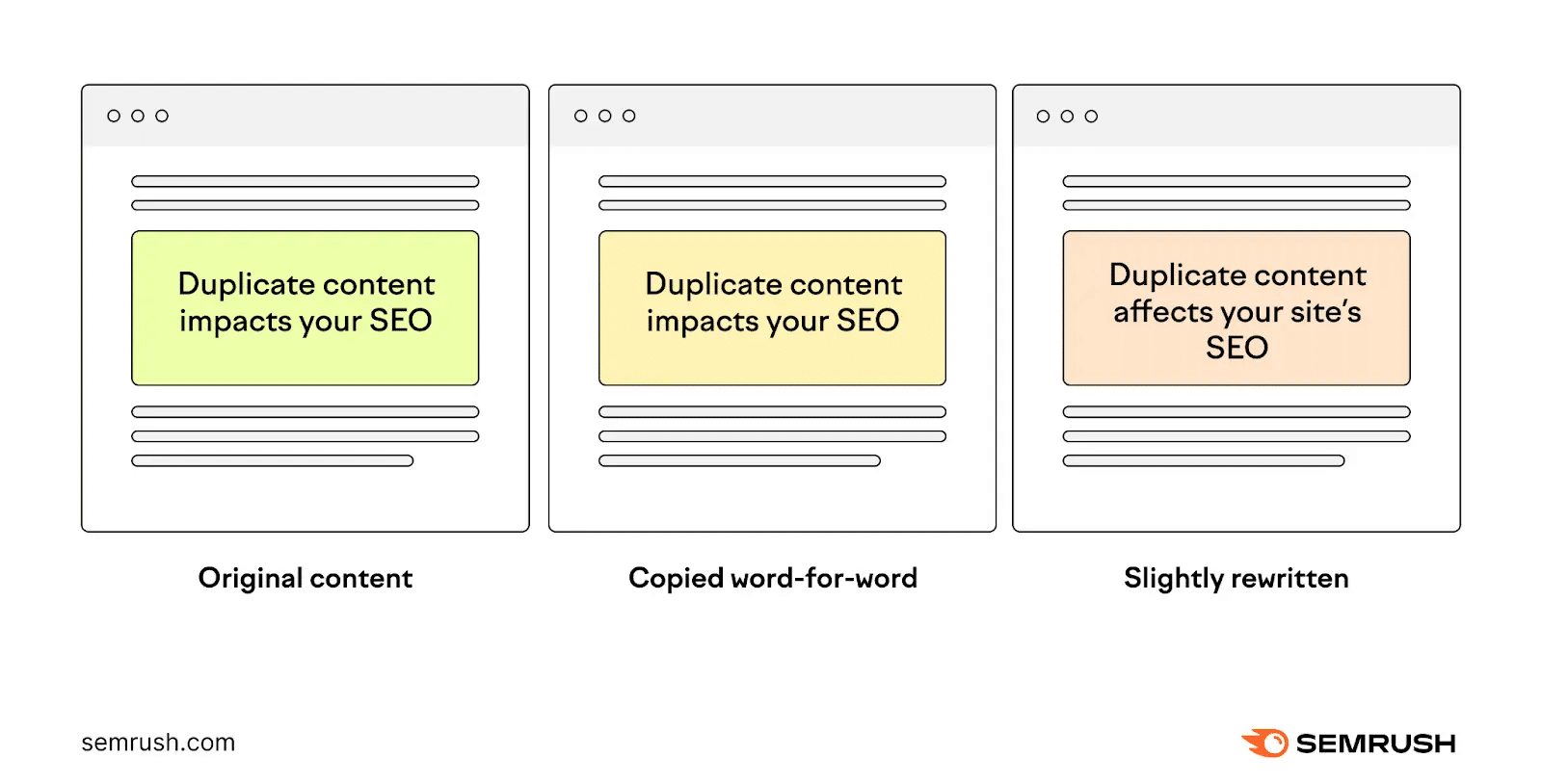
It would look like utilizing noindex tags on duplicate pages is an efficient possibility, however this isn’t the perfect resolution.
As a substitute, think about using canonical tags.
They inform search engines like google which model of a web page is the principle one and needs to be listed. Most significantly, additionally they consolidate rating power from all variations to the principle web page.
5. Request a Recrawl if Noindexed Pages Nonetheless Seem in Search Outcomes
Noindexed pages may nonetheless seem in search outcomes if Google hasn’t recrawled the web page because you added the noindex tag. However you may velocity up the method by manually requesting a recrawl.
To do that, use Google Search Console (GSC).
Log in to GSC and click on “URL inspection” within the left-hand menu.
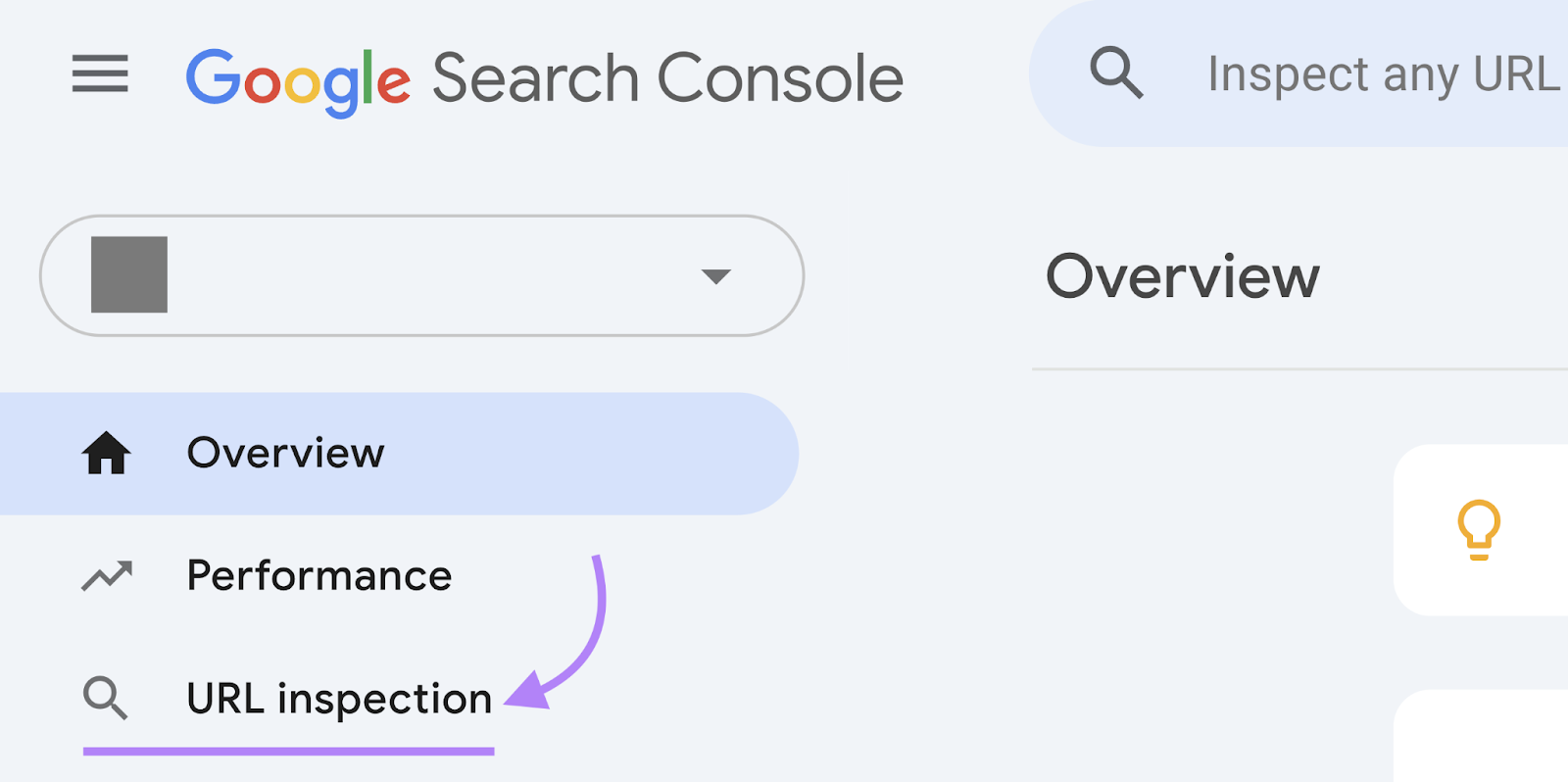
Now, paste the URL of the web page you need Google to recrawl. And hit return.

And click on “Request Indexing.”
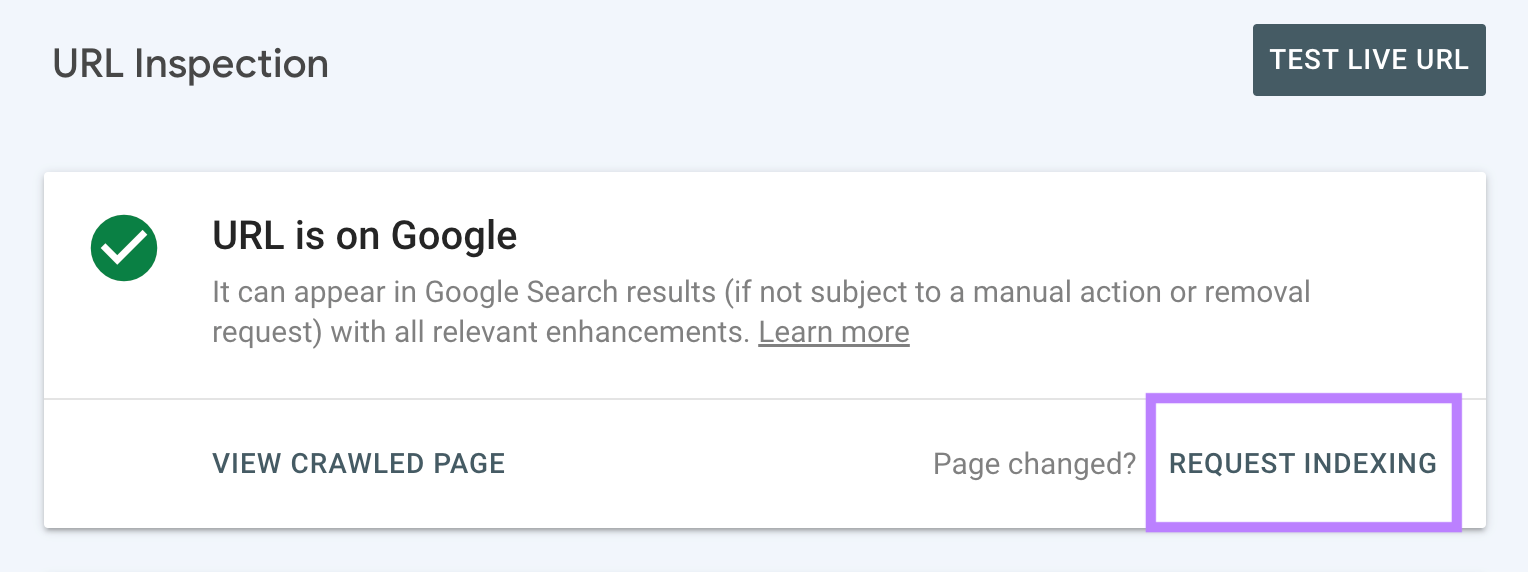
Google will then recrawl this web page.
Word
Even after requesting a recrawl, it’d take a while for the modifications to be mirrored in search outcomes. Be affected person and verify again after just a few days.
6. Recurrently Overview Your Noindexed Pages
It is vital to verify your noindexed pages occasionally. As a result of errors can occur with out you noticing. Like if somebody in your crew by chance noindexed a web page.
By monitoring your noindexed pages often, yow will discover and repair these errors shortly. So that you don’t see a dip in efficiency.
Maintain observe of your noindexed pages utilizing the Website Audit device.
To make issues even simpler, schedule common scans.
Simply go to the “Schedule” tab throughout setup. And choose the choice to observe your web site on a weekly foundation earlier than clicking “Begin Website Audit.”
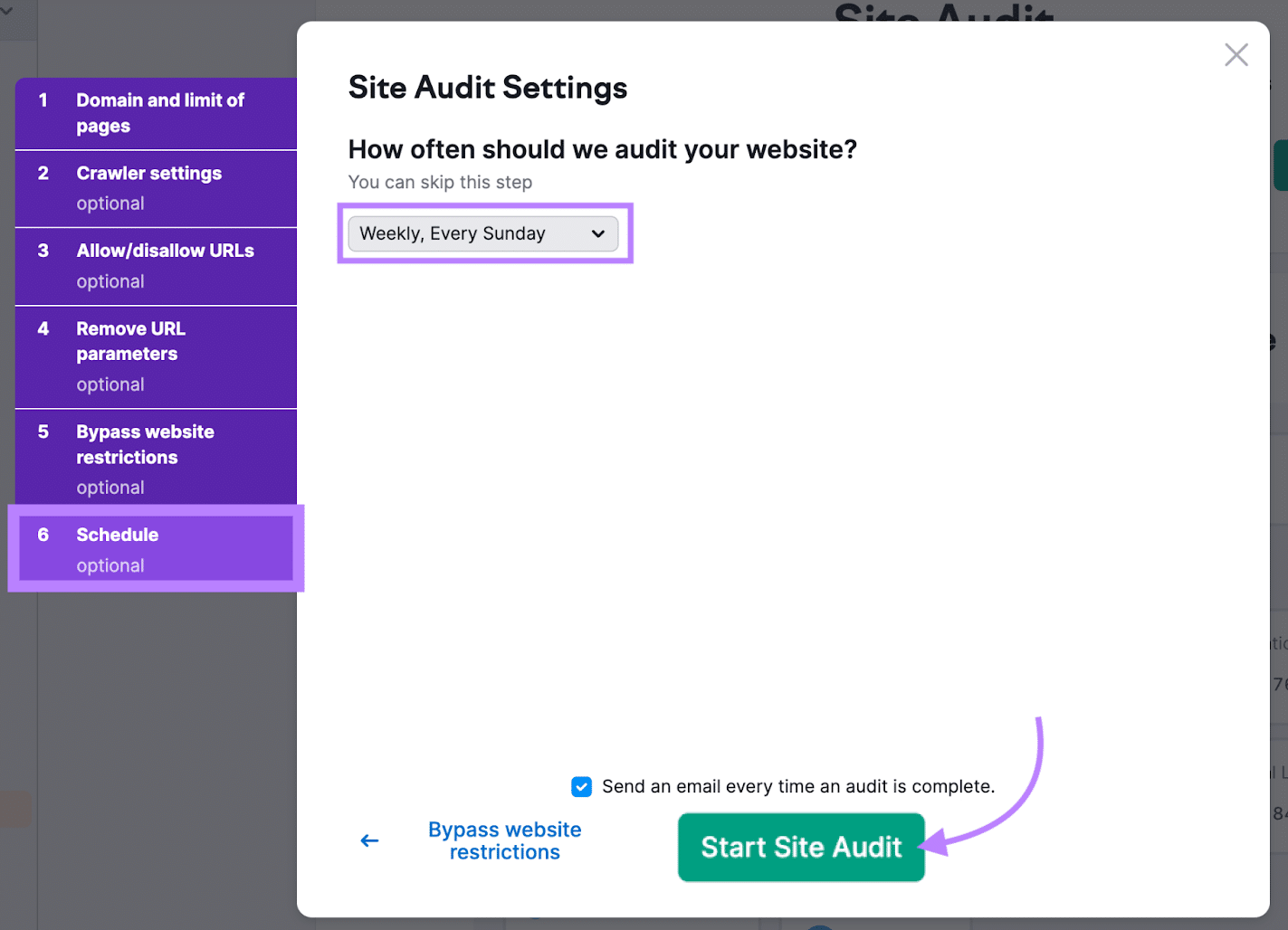
This audit will run on a weekly foundation. So you may keep on high of any points which may crop up sooner or later.


